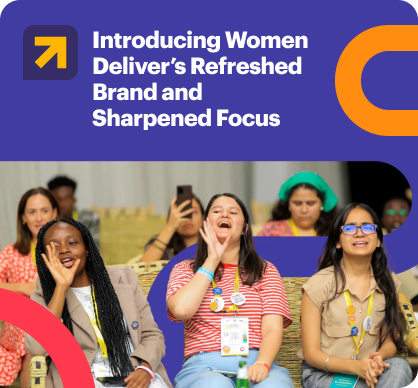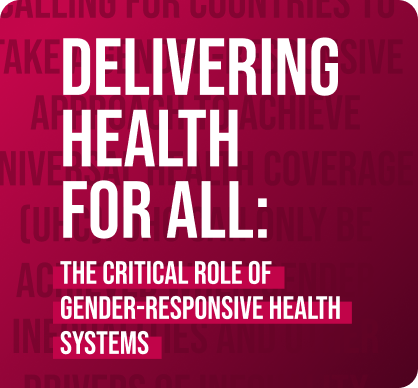Access to Non-Hormonal Contraceptive Options a Critical Component to Comprehensive Healthcare Services

As the CEO of Evofem Biosciences, I have witnessed a variety of trends surrounding access to comprehensive healthcare services.
More specifically, when I look at the various ups and downs through the lens of women’s healthcare products, a field that I have dedicated myself to for my entire career, I am completely convinced that access to sexual and reproductive health (SRH) services, and access to a wide range of contraceptive options, are the core and foundation of comprehensive healthcare services.
No one can debate that ensuring access to comprehensive healthcare services is the cornerstone of healthy societies. Studies have proven time and time again that an investment in the health sector leads to the growth of societies and economies, and contributes to advancing gender equality. The good news is that there has been a rising trend in the implementation of projects that target health care providers, infrastructure development, and product integration. There has also been a growing movement within the larger healthcare services agenda focused specifically on SRH. With SRH problems, such as unmet need for contraception and the prevalence of STIs, being responsible for one third of the health issues experienced by women between 15 and 44, the emphasis on this area is logical and should be prioritized. Additionally, SRH services, especially as they relate to women and girls, have a ripple effect that expands far beyond healthy societies.
When girls and women have comprehensive SRH services, they are much more likely to receive an education, contribute to the economy, and create a strong foundation for their family and community.
At the root of SRH is access to and effective use of contraception. Unfortunately, there are still 214 million women globally who have an unmet need for contraception, and nearly half of all pregnancies worldwide are unintended. In an effort to combat this problem, there has been a movement among women’s health care product companies to develop innovative contraceptive methods, such as vaginal rings and gels.
Side effects related to contraception (largely from hormones) play a big role in a woman’s decision to use or not use a contraceptive method, and have been cited as the main reason women in the developing world choose not use contraception. There needs to be a paradigm shift when we look at contraceptives as part of comprehensive healthcare services, because it isn’t the lack of access women are facing. To be Captain Obvious, the contraceptive landscape lacks innovation. The hormonal birth control pill was introduced into the market over 50 years ago. Since then there have been few non-hormonal products invented and many of the available products have downfalls – whether they be invasive, male-controlled, or lack STI prevention. No non-hormonal product exists on the market that truly meeting all the needs and desires of women. This unmet need is why companies such as Evofem Biosciences are developing contraceptives with women in mind. Evofem’s lead product candidate, Amphora®, is a non-hormonal, on-demand vaginal gel being studied for the prevention of pregnancy and certain STIs. It is the only product of its kind in development. To add icing on this innovative cake, these studies also include an exploratory endpoint measure of sexual satisfaction, which, according to experts in this area, has never been included in a large-scale contraceptive study. To think women may be the subjects of pleasure not the objects of it; what a novel idea!
To provide women with not only the products and services they need, but most importantly the ones that they want and will use, we need to unlock and activate investment in innovative product development.
Currently women’s health accounts for only 4% of the overall funding for research and development for healthcare products and services. What many are not aware of is that it takes the average drug about 12 years and $1B to go from the investigational new drug application (IND) to approval in the US, and worse yet is that only 11.7% of drugs in development actually make it to market – so product innovation is expensive, lengthy and highly risky. Fortunately, there are a growing number of consciously capitalistic investors – investors that want to see innovation in the field of women’s health because they understand the current landscape and want to impact the trend. They understand that women do not want hormone related side effects when it comes to their contraceptives, and they are more inclined to invest in companies that are developing innovations that address the unmet needs of half of the global population.
Finally, it is my belief that the best way to impact trends in comprehensive health services it is to invest in women’s healthcare companies that are led by women. There is a growing awareness that investing in female CEOs and companies with gender diverse boards generates higher profits. Currently, female CEOs only receive about 3% of venture capital money; however, this is shifting. Women now account for 28% of C-level positions and 20% of board seats – more than ever before.
We skillfully multitask and strategically deploy emotional intelligence to influence markets and impact policy to generate higher returns on equity; women have important contributions at the head of the table.
I am encouraged by these positive trends and hopeful for the future. At the end of the day, what we can all agree on with 100% certainty with regards to women’s reproductive health, is that the most effective and beneficial contraceptive is the one women will use.


